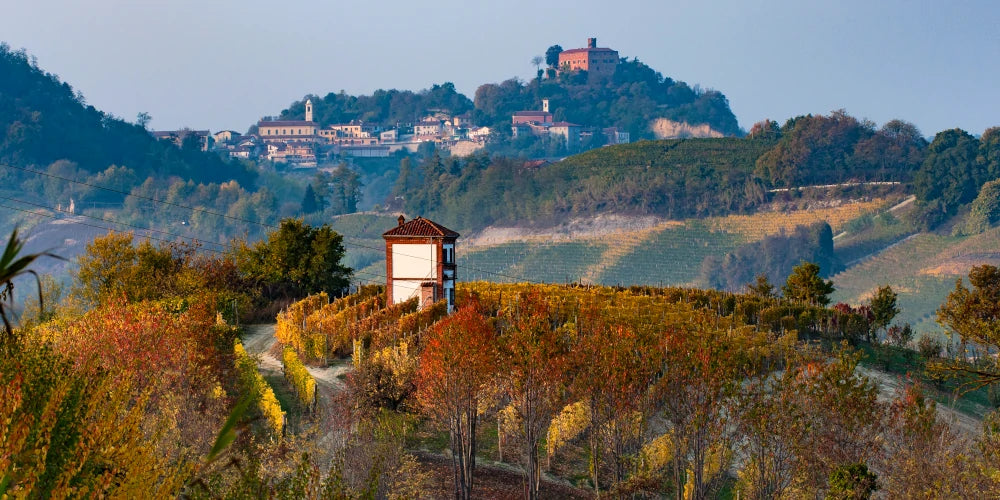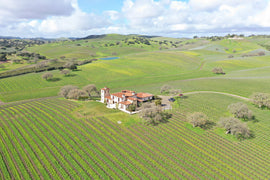|
Brovia Roero Arneis 2022 |
|
|
Region: Castiglione Falletto, Barolo, Piedmont Italy. |
About the Winemaker: In 1863 Giacinto Brovia founded the Brovia estate in the village of Castiglione Falletto, in the heart of the Barolo district. The family has been continually engaged in the growing of grapes and the production of wine since that time. The phylloxera plague, economic upheaval and two wars interrupted production for almost 30 years but, in 1953, two brothers, Giacinto and Raffaele, grandchildren of the founder, resumed full-scale wine production. Giacinto, a trained enologist, was responsible for the production of the wine while Raffaele, a trained agronomist, supervised the vineyard work. Sadly, Raffaele passed away in 2011, and Giacinto in 2014, but Giacinto’s daughter Elena and her husband Alex Sanchez are now completely engaged as the fourth generation in the affairs of this family-run estate. About the Winemaking: The sole white wine of the estate is produced in the Roero district from an 0.80 hectare plot in Vezza d’Alba. The soil is essentially sandy in composition and sits at 340 meters altitude on south-facing slopes. The vineyard was planted in 1980. Harvest (manual) normally occurs in mid-September. The grapes are briefly macerated and the fermentation occurs at controlled temperatures (around 15 degrees Celsius) for two to three weeks. The wine rests in stainless steel until the early spring months of the following year and is usually released to the market, after several months of bottle aging, in late summer/early fall. Approximately 4500 bottles are produced annually, 3,000 of which are shipped to the USA. Tasting Notes: Very aromatic, with notes of stone fruits and almonds. Mineral and clean, with ample fruit and a rich texture, balanced by excellent acidity. |
|
Winemaker: Elena Brovia and Alex Sanchez |
|
|
Price per bottle / per case $34.99 per btl $377.89 per case |
|
|
Suggested Food Pairing: Scallops with citrus-infused butter sauce, traditional stuffing, roasted carrots with thyme, Turkey with rosemary, anise and orange. |
|
|
Sottimano “Mate” Brachetto 2022 |
|
|
Region: Trieso, Cueno, Piedmont |
About the Winemaker: Az. Agr. Sottimano was founded in 1975 by Maggiore Sottimano. The cellar and a small holding in the Cotta vineyard were purchased first, then over the next 30 years Maggiore expanded the estate's Nebbiolo holdings in some of Barbaresco's most revered vineyards - Cotta, Pajore, Fausoni, Curra and in 2001 Basarin. Today, Maggiore’s son Andrea is the winemaker and uses his father’s 30+ years of experience to make decisions in the vineyard. Andrea has a light hand in the cellar and may be Barbareco's most forward-thinking producer. Fermentation happens with natural, ambient yeasts and the wines are bottled unfined and unfiltered. The vineyards are farmed organically with cover crops promoting biodiversity.
About the Winemaking: 100% Brachetto from the Maté vineyard’s 1.1 hectare plot of 40+ year old Brachetto vines planted to limestone and clay in the zone of Treiso. Fermentation and maceration for 20 days with indigenous yeasts. Malolactic fermentation in stainless steel for 8 months. 416 cases produced annually.
Tasting Notes: Aromas of licorice, lavender, sage, and strawberry lead to a fresh and bright palate of dried cranberry and raspberry with a surprisingly long and grippy tannic structure. |
|
Winemaker: Andrea and Rino Sottimano |
|
|
Price per bottle / per case: $25.99 per btl $280.69 per case |
|
|
Suggested Food Pairing: Light enough to be your red-with- fish pairing, charcuterie, mashed potatoes, pizza, roast carrots, mac and cheese, turkey with cranberry sauce. |
|
Instructions
1. Steep the dried porcini mushrooms in 1 cup of hot water for 15 minutes.
2. Meanwhile, saute the onion in 2 tablespoons of the butter (or 3 tablespoons olive oil) over medium-low heat. 3. When the onion is lightly browned, transfer it to a plate using a slotted spoon and stir the rice into the butter (or oil) in the pot.
4. Sauté the rice for several minutes, until it becomes translucent, stirring constantly with a wooden spoon to avoid sticking or burning.
5. Return the onions to the pot, stir in the wine, and continue stirring until the alcohol smell has evaporated, 1 to 2 minutes. Then stir in the first ladle of liquid (if you're using plain water, also add about 3/4 teaspoon of salt), and while it's absorbing, chop the mushrooms and strain the liquid they soaked in through a fine-mesh strainer, as it can contain sand.
6. Add the chopped mushrooms and their strained soaking liquid to the rice, then continue adding water or broth a ladle at a time, stirring occasionally. As soon as the rice is al dente, turn off the heat, stir in the remaining 1/4 cup of butter, 1/2 cup of the grated cheese, the cream (if you're using it), a little bit of ground pepper, the parsley, and fine salt, to taste. Cover and let sit for 2 minutes.
7. Serve hot, with the remaining grated cheese for sprinkling on top.





